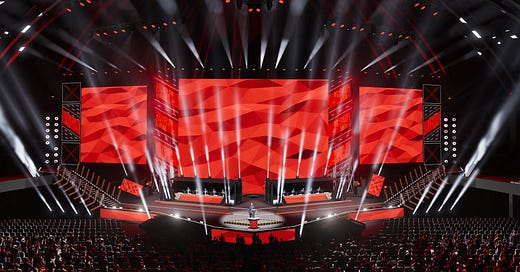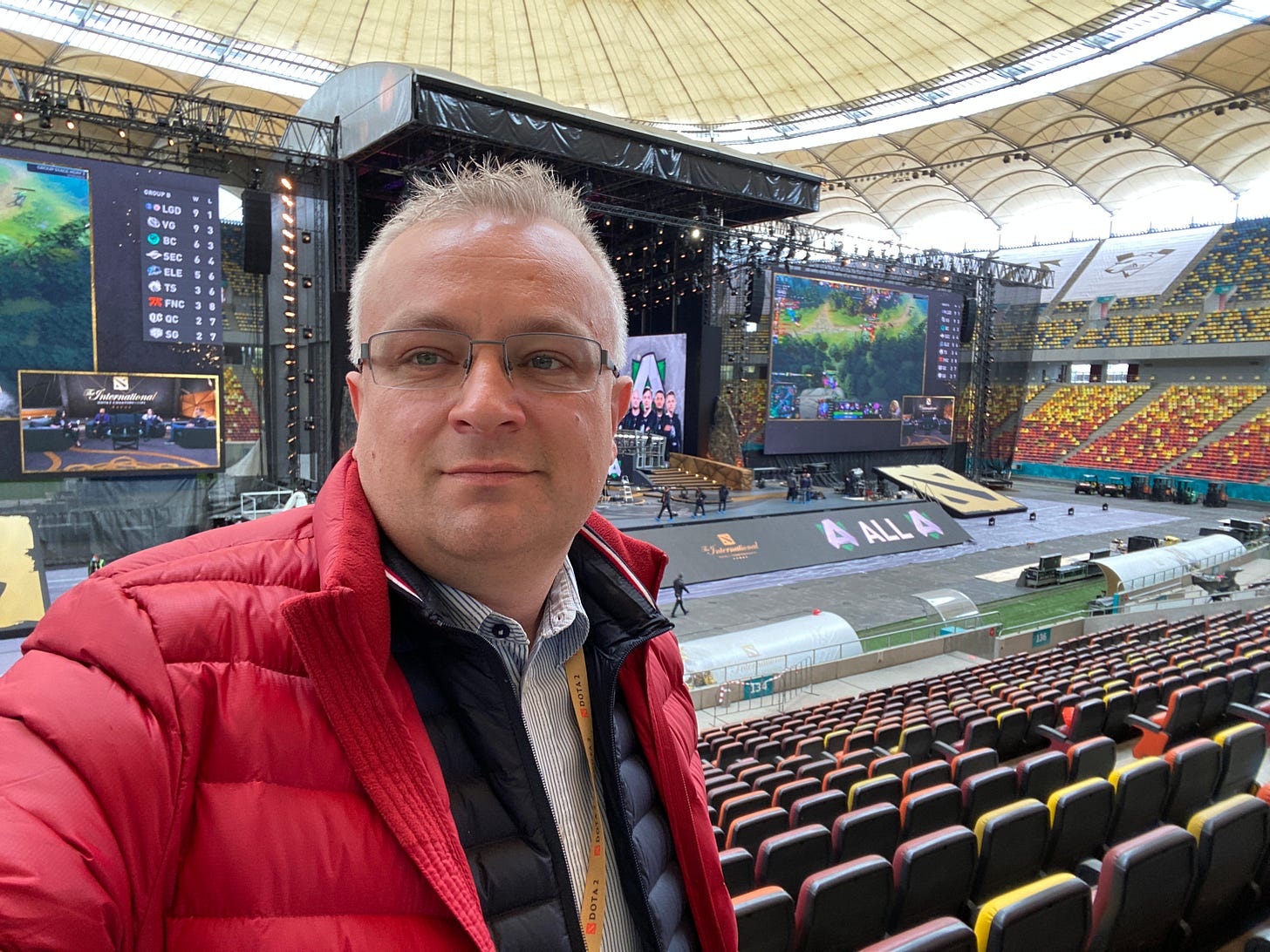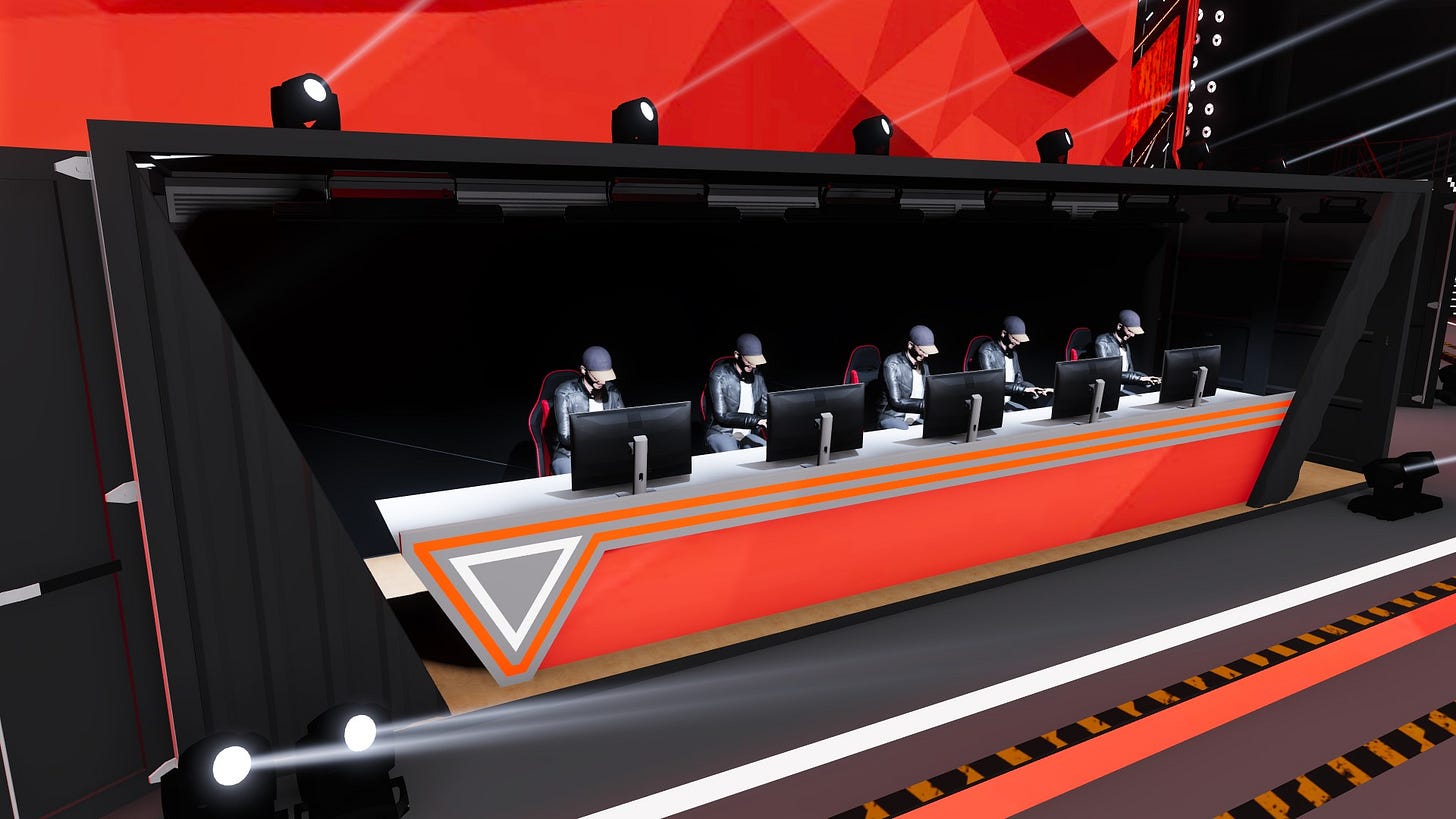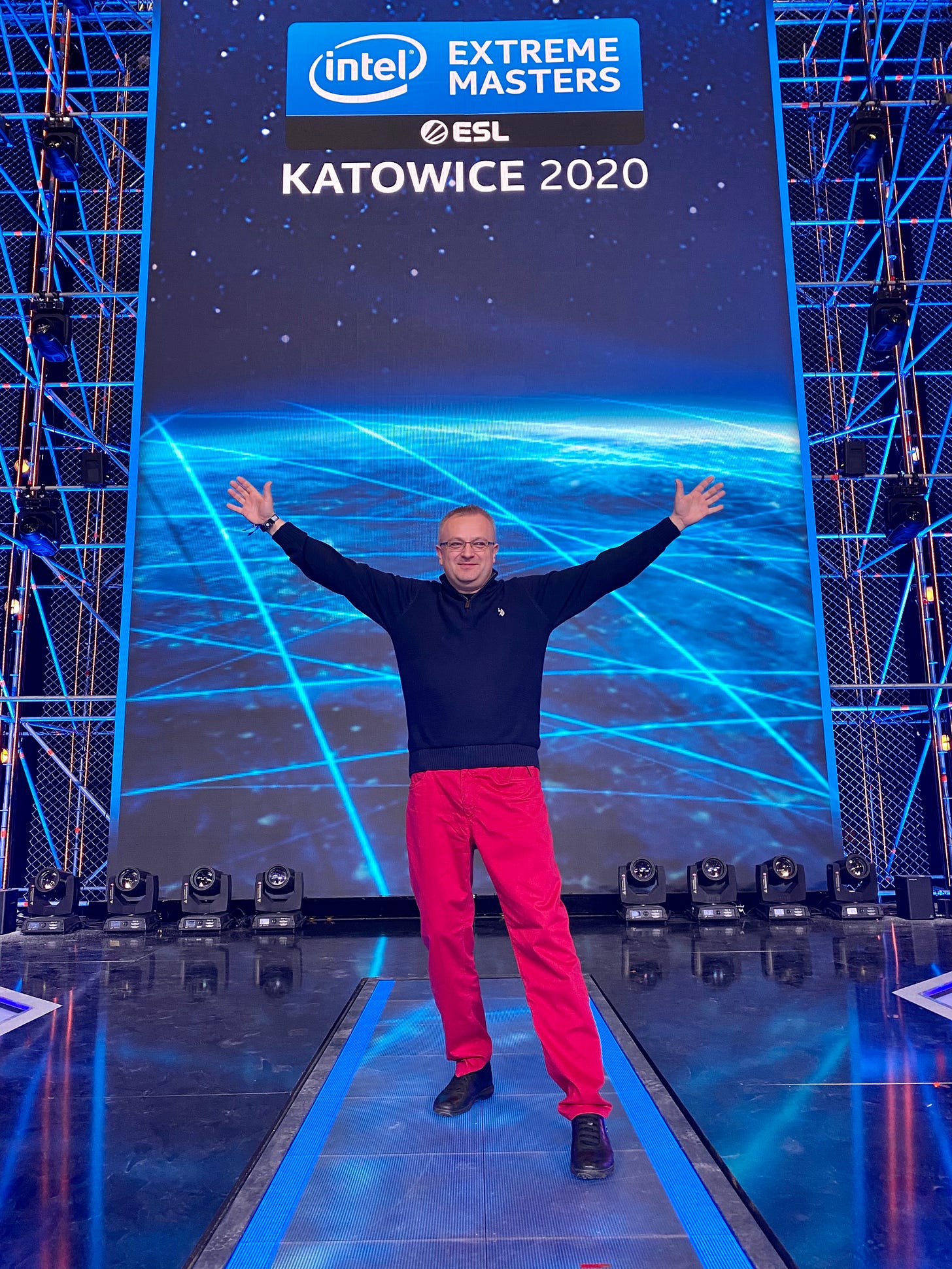Esports events vs permanent esports arenas
Plan an esports arena in your venue ? Here are some suggestions from my 10+ years of experience in area of esports.
Over the last 10 years, we have designed or built esports stages for multiple tournaments for ESL FACEIT Group - EFG (ESL), PGL, BLAST, The Pokémon Company, and others. We have worked in the biggest venues such as ORACLE Arena, Barclays Center in New York, and Lanxess Arena in Cologne or Spodek Katowice.
Although we have been involved in the creative and esports technical productions of more than 500+ esports events and tournaments, most are temporary event installations built for only a few days or weeks.
For a year or two, we have had more and more projects dedicated as permanent or semi-permanent, hopefully popping up in amusement parks and entertainment venues. It's important to understand how to prepare such a stage from an architectural point of view and functionally in terms of esports needs and demands.
Forgetting about some elements may exclude you from being considered for the largest tournaments, such as Esports World Cup events, which are being organized worldwide.
So, if you are a venue operator or architect, it's good to know how to make it right :)
Here are some suggestions from my 10+ years of experience in this area.
So first, how is it with the Esports event setup?
Each event has its rules depending on the country and venue, but what is the same - it has been built for a 2-3 days tournament, sometimes longer, and afterward, the floor in the arena is cleared.
Yes, this has to be done according to all safety rules; all the rigging has to be correctly measured, and all the equipment and scenic installations must be done correctly, but all the scenic elements and materials are designed and built to be used for a very short period and somehow be cost-effective as after the show they are trashed.
Most equipment is rented, even cables; power distros are temporary event equipment, different from the permanent power and signal standards. And during the setup, rehearsals, and show days, you have a professional crew on site who cares about each discipline, from audio, video, lighting, scenic, broadcast, and so on.
How is it permanent and semi-permanent?
The permanent venues and studios may look similar outside but must be designed and built differently.
Scenic elements dedicated to such installation will be used for a few years and have to have different construction, more solid, better-covering materials that will not break easily.
They have to be good-looking during their entire life, no matter if they will be installed and stay “forever” or will be mounted and dismounted multiple times. They have to be solid!
Based on classical installation components, permanent power and signal cabling to all lighting and video fixtures must be done in different ways, according to the local rules and regulations.
You must prepare a set with removable but covered corridors and cableways for broadcast and other purposes. No matter what productions you imagine today, new ideas will come after a year, and if you want an extra camera here or there, there should be a way to cable it.
When you finally have an approved design, where all the parties accept how it will look, you have to start booking equipment and technologies on which your architect bases the whole project. It’s worth saying that for some equipment, lead production time is months, sometimes even a year or more.
Yes, you can swap and change the gear, but you have to remember that even though there is a wide choice of gear and many companies offer similar units, in Entertainment lighting and lead, there are huge differences and small details that do the job or not.
Choosing the right equipment is a challenge not only from an effective point of view but also in terms of quality - trust me, it's better to buy more expensive fixtures as they will keep working after the warranty ends, and the labor cost of moving out will exceed the savings in the beginning.
Of course, when you procure the project, you get a lot of questions from different suppliers—can we change this or that? Usually, each provider wants to change most of the elements/gear. Such swaps are possible, but working closely with a light design team is essential to avoid situations where those changes will not affect the final effect, and replacements are quality brands and products.
You want to avoid the situation when you can't rent an esports professional tournament venue. Still, the production team will say that this gear is dedicated to a disco or club and must be removed to execute the high-value event, which will be streamed globally.
Not so long ago, we did a project in which we couldn't ship the screen on time with proper parameters, and we found the same model locally - the problem popped up at rehearsals - provided the screen has a lower refresh rate and a simple blink in cameras.
So you see, for a purchasing department, it's the same model, more cost-effective, looks the same, and name the same, but “god is in the details” - its refresh rate completely destroys the XR and AR effect we planned.
Want an esports arena in your venue? Here is how to start!
Before starting the creative process, venue owners must answer crucial questions about the venue's purpose, game focus, multi-game capability, multipurpose use, hosting competitions, frequency of events, additional gaming activities, control on non-show days, and integration with existing systems in amusement parks.
Is this venue dedicated to some particular game or kind of play? Racing, Battle games, card games?
If the esports or gaming area is part of an amusement park, what other systems exist in the garden, and how should the new attraction be compatible with existing systems?
What does it mean if the plan is to have a universal arena for multiple games?
Does this venue have to be multi-purpose?
Are you considering attracting professional tournament organizers to organize some significant competitions?
How will the arena be used besides professional and semi-professional tournaments?
How often will the events be organized?
What other gaming activities are planned, if any?
How will it be controlled during non-show days?
Like every discipline, Esports has its demands and regulations, and even the fanciest esports stage designs must be done according to unwritten (yet) rules to meet the requirements of players, broadcast purposes, audience, and safety regulations.
Have questions?
Rafal








